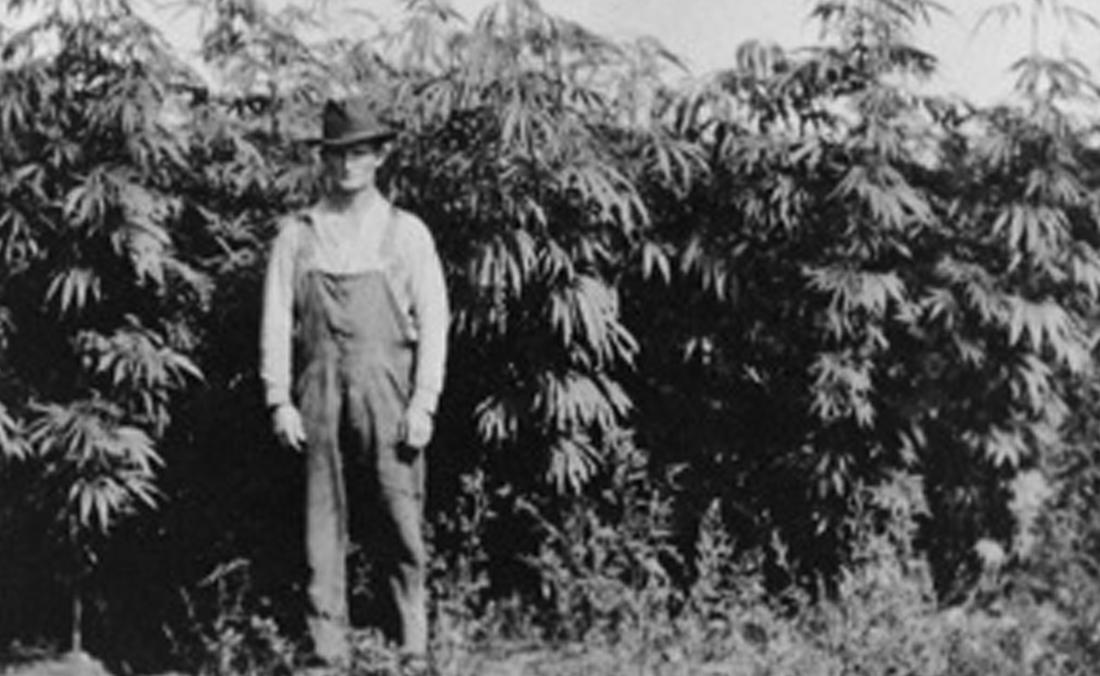
9 minute read
Blaze It
HISTORY

Advertisement
BY CHRISTOPHER COGGAN CALIFORNIA CANNABIS:
MISSED OPPORTUNITIES AND THE CURRENT STATE OF REGULATORY EFFORTS

MJ TAX ACT OF 1937: An Act to impose an occupational excise tax upon certain dealers in marijuana, to impose a transfer tax upon certain dealings in marijuana [cannabis], and to safeguard the revenue there from by registry and recording.
On October 12th, 2017 California’s Bureau of Cannabis Control (BCC) held its first public licensing workshop at the Muses Room in the Wallis Anneberg Building at the California Science Center. A beautiful room, lounge-lit with recessed lighting and capped by intricate crown molding, the Muses room is often used as a VIP area for large events based in the main hall. In this case, the Bureau of Cannabis Control (BCC) along with several other state agencies, decided it would be an appropriate setting to address the questions and provide assistance to potential licensees residing in and around the largest cannabis market in the world.
Arriving 15 minutes early, the line already stretched around the building, nearly the length of a football field. An hour after the scheduled starting time, the line, a slowly snaking jumble indicative of southland’s diversity and entrepreneurial spirit, continued to grow, literally winding off into the distance beyond sight. I would estimate 8,000 people came out for a workshop, a workshop which was quickly recast as an opportunity to pick up printed materials that were, as it turns out, all available online. A similar scene manifest itself in Riverside, Ca the very next day. Unfortunately for the BCC, this woefully inadequate effort serves as a telling analogy.
The cannabis industry is a multigenerational one that stretches back decades. Starting in the 1950’s, this illicit subculture grew from the central Mendocino coast and built a network stretching throughout California and beyond. By the early 1970’s this culture was defined by a well-established and self-regulated black market. The size of this market was illustrated in 1975 when Proposition 19 made it to the voters, marking the first effort at decriminalization. Although that measure was defeated, it paved the way for the passage of SB95 in 1975, which reduced possession of small amounts of cannabis to a misdemeanor.
For the next 20 years or so, the m1`12arijuana trade continued to ebb and flow, subject to various levels of enforcement that rose and fell depending on state and national politics, swirling in the cultural undercurrents of the California Counterculture.
In 1996 the passage of Proposition 215, also known as the compassionate use act, set the stage for access to Medical Marijuana. Cooperatives and dispensaries popped up across the state and the California gray market was born.
This is where, in the words of a native Californian, the State failed in a most epic fashion. From 1996 to 2015 the medical marijuana gray market pulsed and thrived. Subjected to limited state oversite and cyclical local municipal crackdowns, the industry evolved and transformed into a dynamic, multifaceted, multi-million dollar behemoth.
For the most part, Local municipalities waited on the sidelines for the state to guide the drive towards a regulated market. The state failed to do so.
The 19 years from 1996 to 2015 might qualify as the most critical missed opportunity to regulate and normalize a multibillion dollar market in the history on the United States.
In 2015, a group of bills collectively referred to as Medical Cannabis Regulation and Safety Act (MCRSA) established a comprehensive state regulatory framework for the licensing and enforcement of cultivation, manufacturing, retail sale, transportation, storage, delivery and testing of medicinal cannabis in California. Nearly 20 after Proposition 215, MCRSA was the state’s first real effort to provide such guidance. the state’s first real effort to provide such guidance.
And then, in November 2016 Proposition 64 passed. Californians are now expecting access to adult use marijuana on January 1st, 2018. The California State government, progressive and ahead of the curve in 1996, now finds itself with a 14 month window to clarify legislation and regulation in the 7th largest economy in the world. And time is running out.
So far, as illustrated by their first attempt at a instructive workshop, they have yet to understand the breadth and scope of this industry.
Before exploring the potential destructive and far-reaching consequences of 20 years of missed opportunities, it is important to first acknowledge that those currently spearheading regulatory and legislative efforts have and continue to be proactive in their efforts to ensure safe access and practical regulation. They have, to a meaningful extent, leaned on industry leaders (whom have effectively self-regulated since 1996) for their insights and experience. Constructive dialogue is forging relationships that, through perseverance and unyielding commitment, may one day lead to normalization and acceptance of this dynamic industry. But is this too little too late?
Current indicators would suggest this is unfortunately the case.
In June 2017, the California Legislator passed Senate Bill 94 which effectively repeals the Medical Cannabis Regulation and Safety Act (“MCRSA”) and incorporates certain provisions of the MCRSA in the licensing provisions of the Control, Regulate, and Tax Adult Use of Marijuana Act (“AUMA” aka Proposition 64).
Following this, AB 133 the associated cleanup bill was signed mid-September. Although this provided some meaningful direction and resolution, the majority of regulations guiding the industry will not be available until the end of November. Even then, many of these regulations will only be temporary, emergency regulations
The issues with the current state of cannabis in California are numerous and have serious implications for both the industry and the consumers. Two of the most foundational issues are licensing and safe access to adult use.
Licensing. In order to apply for a state license, a cannabis cultivator, testing facility, manufacturer, distributor, or retailer must first have a local license. Unfortunately, many local municipalities have not yet passed their local ordinances. Consequently, if the city in which you are doing
business is cannabis friendly but still working on the application process, you will not be able to apply for a state license. This effectively means you are out of business (or, as of January 1st, 2018, operating illegally) until your licensing application is accepted or the local government is willing to provide verification of your pending status, allowing you to apply for a temporary state-level license.
This, of course is assuming you are even in a position to apply for a license. The real estate available to Cannabis businesses is extremely limited to do local ordinances and state required setbacks and specifications. The area in which a cannabis business
George Washington cultivated hemp at Mount Vernon for industrial uses: the making of rope and sail canvas, thread for clothing, use in repairing the large seine fishing nets

“Scientists have demonstrated that taking THC, the substance found in pot[cannabis] that gets you high, can help manage seizures, nervousness, moderate the movement of Alzheimer’s, treat Parkinson’s, and has appeared to help with PTSD. ”
can exist, which is referred to as “The Green Zone”, is typically limited to light industrial /commercial areas and subject to arbitrary caps on the number of licenses available due to proximity or statute. Navigating through the various local ordinances is a tedious process in itself, as the language and limitations vary widely. If you happen to be lucky enough to find a location to lease or buy, welcome to your next roadblock.
As a result of the mainstream media spinning the cannabis industry as “The Green Rush”, many propertyowners in these zones have seen the overwhelming interest in their properties and have responded in kind. For example, one building was demanding a $100k signing bonus, ten times the going rent rate of the local area, and 10% of gross revenue for perpetuity.
On top of these outrageous demands, the cost of local licensing can be incredibly expensive. Local application fees and taxes vary widely, are often based on a non-refundable competitive or lottery-like process. When all the associated expenses are combined, a single operator can spend anywhere from $10-$200k throughout the process, with no guarantee of success.
If you can somehow crawl through that river of shit and come out the other side with a viable business, now you are faced with the next challenge. The state license. As of now, the end of October, 2017, lett then 70 days from 2018, the state has still not provided all the details regarding that process.
That said the state level agencies that are in charge of the application approval process have suggested this process will be less arduous and less expensive than the local application process.
Consumer Access
Proposition 64, overwhelmingly approved by California voters in November 2015, paved the way for adult access. According to the legislation, California residents will be granted this access January 1st, 2018. Once again, California faces an overarching challenge as a result of this timeline.
Local municipalities, many of which were waiting for final legislation from the state in order to avoid conflicting local regulation, have not yet accommodated adult access in their local ordinances. Even Oakland, often considered a cannabis sanctuary city, has yet to provide a clear pathway for adult access. Unbelievable, of all 487 incorporated cities across the California, only two that are embracing the cannabis industry have actually solidified their position on adult use.
Other Concerns
The Office of Manufactured Cannabis Safety will be releasing their emergency regulations towards the end of November. These regulations will leave many aspects of cannabis products and related packaging in Limbo for most of 2018. Expensive retooling of processes, prohibited ingredients, product potency limits, and packaging restrictions will create significant increases in costs that will ultimately trickle down to the consumer.
The contracted tracking software for seed to sale tracking of Cannabis, called Metrc, is unlikely to accommodate many of the unique attributes associated with California’s marketplace on day one. This, in addition to lack of beta testing, lack of training, and no clear means of enforcement, also poses a significant threat to the supply chain and safe access. The biggest concern is that if early adopters incur significant costs adopting a system that does not work, it could very well send these operators right back into the illicit market. Happy 2018 2018 will be a pivotal year for the
California Cannabis industry. The likelihood of a smooth transition into a hastily prepared regulatory track is unimaginable at this time, and will most likely negatively impact safe access, compromise the supply chain, and prove disastrous for many smaller and medium sized operations.
The only saving grace is that the California regulatory agencies have engaged industry leaders for their expert knowledge and will continue working diligently to get it right. In their defense, these agencies are tasked with an impossibly complex and entrenched marketplace, the size and scale of which is finally coming into focus. There is no quote, no instruction, no reference that will help tame this beast, only time, commitment, and patience. C

MJ TAX ACT OF 1937: An Act to impose an occupational excise tax upon certain dealers in marijuanathe revenue there from by registry and recording.










